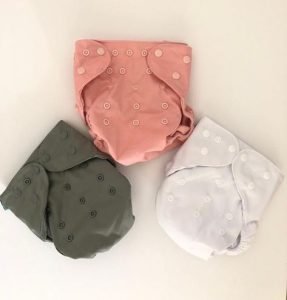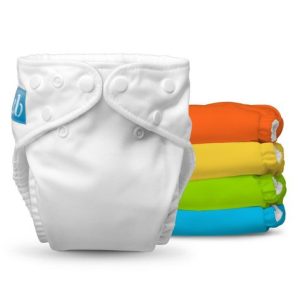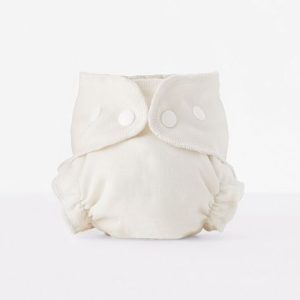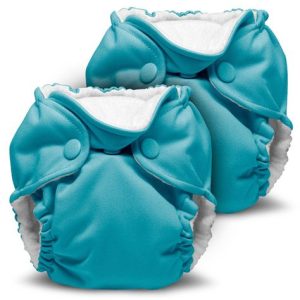Introduction
Every child develops at their own pace. This includes potty training, a milestone that can feel exciting and daunting for parents. There’s no set age for when children stop wearing diapers. When do kids stop wearing diapers?
This article explores signs that your child might be ready for potty training and offers tips for a smooth transition.
Developmental Readiness: When Your Child Might Be Ready
There’s no magic age for potty training readiness. However, some signs indicate your child might be developing the physical and mental skills needed:
Physical Cues:
Your child can pull their pants up and down independently. They might show discomfort in a full diaper.
Verbal Cues:
Your child starts using words for pee or poop, or shows interest in the toilet.
Following Routines:
Your child shows interest in routines and may imitate adults using the toilet.

It’s Okay to Wait!
If your child isn’t showing these signs, don’t pressure them. Trying to potty train before they’re ready can lead to frustration for both you and your child.
Creating a Potty-Friendly Environment
Here are some ways to create a positive and supportive environment for potty training:
- Invest in a Potty Chair: Choose a colorful and comfortable potty chair sized for your child.
- Read Potty-Training Books: Look for books with simple language and illustrations that introduce the concept of using the potty.
- Talk Openly About Pottying: Use simple language to explain what happens when you use the toilet and how it works.
Let Your Child Lead the Way
Let your child explore the potty at their own pace. Avoid forcing them to sit for long periods.

Making Potty Time Positive
Here are some ways to make potty training a positive experience:
- Offer Rewards and Praise: Celebrate successes with positive reinforcement, like stickers or praise.
- Make Potty Time Fun: Sing songs, read books, or play games during potty time to keep it light and engaging.
- Be Patient and Understanding: Accidents happen! Stay calm, clean up messes together, and gently remind your child about using the potty.
Focus on the Journey, Not the Destination
Potty training is a journey, not a race. There will be setbacks along the way. Focus on celebrating small victories and making the process positive for your child.
If you have concerns about your child’s potty training progress, talk to your doctor. They can address any underlying medical issues and offer additional guidance.
You know your child best. If something feels off, don’t hesitate to reach out to your doctor or a parenting specialist for support.
Every child’s potty training journey is unique. By following your child’s lead, creating a supportive environment, and celebrating their progress, you can make this milestone a positive and rewarding experience for everyone.

Signs Your Child Might Be Ready for Potty Training
There’s no set age for when kids stop wearing diapers, but there are some signs that they might be getting close! Here are some things to look for:
- Physical Development: Your child can pull their pants up and down on their own. They might start showing discomfort in a full diaper by saying something or fussing.
- Following Routines: Your child shows interest in routines and may even imitate adults using the toilet.
- Verbal Cues: Your child starts using words for pee or poop, or shows curiosity about the toilet.
It’s Important to Be Patient
If your child isn’t showing these signs yet, that’s totally okay! Every child develops at their own pace. Trying to potty train before they’re ready can lead to frustration for both you and your child.
Focus on Making Potty Training Positive
When your child does start showing signs of readiness, you can create a positive and supportive environment for potty training. Here are some ways to do that:
Get a Fun Potty Chair:
Choose a colorful and comfortable potty sized for your child.
Read Books Together:
Look for books with simple language and illustrations that introduce the concept of using the potty.

Talk Openly:
Use simple language to explain what happens when you use the toilet and how it works.
Potty training is a journey, not a race. There will be ups and downs along the way. The most important thing is to be patient, understanding, and celebrate your child’s progress!
Creating a Supportive Potty-Training Environment
The exact age when kids stop wearing diapers varies, but there are ways to create a positive experience when they are ready. Here are some tips:
-
Pick a Potty They Like: Choose a colorful and comfortable potty chair sized for your child. Let them explore it at their own pace.
-
Stock Up on Fun Books: Look for books with simple language and illustrations that introduce using the potty in a positive way. Read them together and make it a fun activity.
-
Open Communication is Key: Use simple language to explain what happens when you use the toilet. Answer their questions honestly and openly.
Remember, Patience is Key
Every child develops at their own pace. Don’t pressure them to use the potty before they’re ready. Signs they might be ready include:
- They can pull their pants up and down.
- They seem uncomfortable in a full diaper.
- They start using words for pee or poop.
Focus on the Journey
Potty training is a learning process with ups and downs. Celebrate small victories and make it a positive experience for your child.

Making Potty Training Positive
When your child shows signs of readiness, you can create a positive and supportive environment for potty training:
- Fun Potty Chair: Choose a colorful and comfortable potty sized for your child.
- Positive Reinforcement: Celebrate successes with stickers, praise, or a fun activity.
- Relaxed Atmosphere: Make potty time fun and engaging with songs, books, or games.
Remember: Be patient and understanding. Accidents happen! The most important thing is to focus on making potty training a positive experience for your child.
Here are some tips that can help you know when your child might be getting close:
- Physical development: Your child can pull their pants up and down on their own.
- Following routines: Your child shows interest in routines and may even imitate adults using the toilet.
- Communication: Your child starts using words for pee or poop, or shows curiosity about the toilet.





